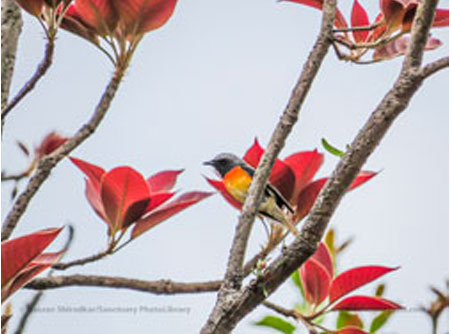“For whatever happens to the beast soon happens to man. All things are connected.
– Chief Seattle of the Suquamish Tribe 1786-1866
Ilove trekking. And I love taking my own sweet time getting to places, rather than racing from one destination to another. En route, at tea shops and small villages, one picks up more information from locals about the lay of the land in an hour, than might be possible from weeks of individual exploration. Nevertheless, when it comes to natural history experiences, the best ones are those you experience for yourself.

I watch birds. I’m not particularly good at identifying exotic species at sight without the aid of a bird book, but have more than a working knowledge of evolution and find myself continually investigating why a particular bird does what it does, what use its colours are and what ecological circumstances favours its survival where it is found. All too often I make something of a game out of figuring out what kind of food a bird might be eating, why its beak is shaped just so and what kinds of plants or trees it most relies on.
As one who is fighting almost daily to protect species and habitats, the question that intrigues me most, of course, is how birds manage to survive the many trials of life we humans seem so expert at manufacturing for them.
High in the canopy of its tropical forests, the camouflaged nest of the Small Minivet, for instance, sits relatively safe. A marvellous little collection of twigs, grasses, leaves and lichens, it is glued together by cobwebs and is largely protected by its inaccessibility. For millions of years, these tiny forest jewels survived nature’s challenges by adapting and adjusting to their subtly changing ecological circumstances. Turning adversity to advantage, they have even managed in recent times to take up residence in the many gardens, plantations and woodlots that fringe our vanishing forests.
But the endurance of such consummate survivors has limits. Across India, in our enthusiasm to industrialise and to subdue farm pests, we have unwittingly let loose a chemical war on all living things, including eagles, vultures and yes, even minivets.
Our use and abuse of pesticides and other chlorinated compounds and plastics, particularly PVC, releases unbelievably lethal by-products into the environment, including such killers as dioxins and furans, among the most toxic substances known to science.
Dr. Paul Connett, a world-renowned expert on dioxins explained to a small group that living creatures cannot escape the consequences of such folly. But, he added, women can actually rid themselves of dioxins quite dramatically – by simply having a baby!
As we sat in stunned silence, he used simple illustrations to explain how as much as 25 per cent of the body load of dioxins in the bodies of pregnant women are ‘discarded’ by the simple expedient of delivering a baby! Of course, the young one then is born with an implanted ‘time bomb’ and is more likely than its mother to contract cancer, or develop genetic defects that would show up in later life.
Perhaps we should pay closer heed to the wisdom of the ages, as exemplified by Chief Seattle.

 [/column]
[/column]